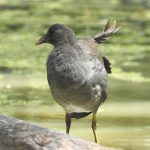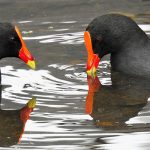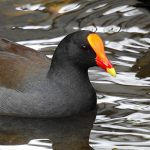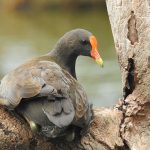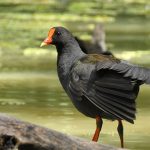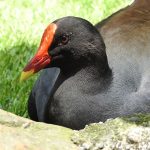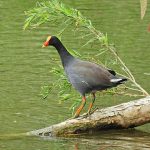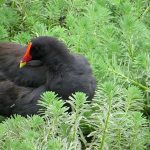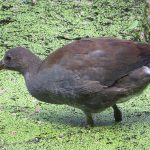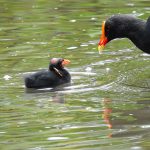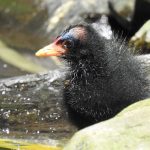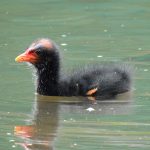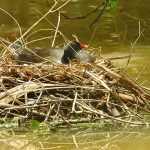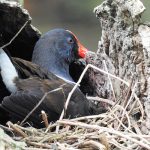DUSKY MOORHEN
The Dusky Moorhen makes its home across much of eastern and south-western Australia, as well as Tasmania, preferring the tranquillity of freshwater environments like ponds, lakes, and rivers. These areas provide the perfect stage for the Moorhen’s daily routines and life cycle.
A Dusky Moorhen can live a fulfilling life of about 7 years in the wild, a testament to its adaptability and resilience. In this time, it weaves a tale of survival and community, often seen in small groups known as ‘tribes’.
One of the most captivating sights is the Moorhen’s balletic performance during courtship. The males and females engage in an intricate dance, dipping and bobbing their heads, fluttering their wings, and even presenting each other with carefully selected aquatic vegetation as tokens of affection.
The nests of the Dusky Moorhen are a work of art, constructed with care from reeds and grasses, and often hidden among the vegetation near water. The females lay a clutch of eggs that are a canvas of buff and brown spots, which they tend to with dedication until the chicks emerge.
The chicks are born into a world of communal care, where not only the parents but also other group members contribute to the upbringing of the young, teaching them the ways of the waterways.
In terms of their conservation status, the Dusky Moorhen is considered to be of ‘Least Concern’ by the International Union for Conservation of Nature (IUCN). This status reflects the bird’s wide distribution and stable population numbers. However, it is important to remain vigilant. The health of their habitats is critical to their survival, and changes in land use, pollution, and climate can all pose threats to these water-loving birds.
The Dusky Moorhen, with its serene presence and communal spirit, is a reminder of the delicate balance in our natural world. It stands as a symbol of the importance of protecting our waterways, not just for the wildlife that calls them home, but for the health of our planet as a whole.
As we marvel at the simple beauty of the Dusky Moorhen and its harmonious existence, let us be inspired to nurture and safeguard the natural environments that are essential to the survival of such species. For in doing so, we ensure a future where these birds continue to grace our waters with their quiet charm.

